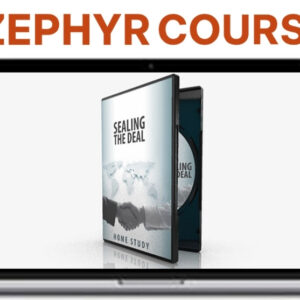Description
Understanding the True Nature of Fear
Fear shapes your choices more than you realize. It often lurks beneath the surface, influencing your actions, words, and even the risks you’re willing to take.
Understanding the true nature of fear means recognizing that it’s not just an emotion—it’s a survival mechanism hardwired into your brain. Fear psychology explains how your mind interprets threats, sometimes exaggerating danger and holding you back from growth.
But you don’t have to let fear control you. By observing your reactions and challenging negative thoughts, you can start overcoming anxiety.
When you acknowledge fear’s role without letting it dictate your life, you open yourself up to new possibilities. Remember, facing fear isn’t about eliminating it, but learning to move forward despite it.
Common Myths That Hold Men Back
Many men grow up believing certain ideas about strength, courage, and vulnerability that aren’t just unhelpful—they’re flat-out wrong. You might think you always have to appear tough and unshakeable because that’s what societal expectations demand.
This myth convinces you that showing emotional vulnerability equals weakness, making you bottle up feelings instead of facing them. In reality, hiding your emotions doesn’t make you fearless; it limits your growth and connections.
Another common myth is that real men never ask for help. But refusing support only isolates you and increases pressure. Believing you should have all the answers or never show doubt stifles your potential.
Actionable Steps to Embrace Fearlessness
Although it’s natural to hesitate when facing the unknown, you can train yourself to act in spite of fear. Start by acknowledging your fears rather than suppressing them. When you name what you’re afraid of, you take away some of its power.
Practice embracing vulnerability by sharing your concerns with people you trust; honesty builds inner strength. Next, set small, manageable challenges that push your boundaries. Each success, no matter how minor, helps you build confidence and momentum.
When you face setbacks, focus on cultivating resilience instead of self-criticism. Learn from mistakes and adapt your approach. Finally, adopt a growth mindset—see fear as an opportunity to grow, not a barrier. Consistent action will turn fearlessness into your new habit.
Frequently Asked Questions
How Can I Measure My Progress Towards Becoming More Fearless?
To measure your progress toward becoming more fearless, use self assessment techniques like journaling your reactions to fears and tracking achievements. Notice how often you confront fears and celebrate small wins. You’ll clearly see your growth over time.
Are There Specific Role Models Known for Their Fearlessness?
If you’re seeking inspiration, look to fearless leaders and historical figures like Nelson Mandela, Malala Yousafzai, and Rosa Parks. They’ve faced adversity with courage, showing you how determination and conviction can define true fearlessness.
What Impact Does Fearlessness Have on Relationships?
When you embrace fearlessness in relationships, you promote trust building and emotional vulnerability. You openly share your feelings, encourage honest communication, and create a safe space where both partners feel valued and understood, strengthening your connection.
Can Fearlessness Be Taught to Children Effectively?
You can teach children fearlessness effectively by encouraging them to try fearless activities and nurturing resilience. When you support their efforts and help them learn from setbacks, you help them build confidence and handle challenges bravely.
How Does Culture Influence the Perception of Fearlessness?
You see cultural narratives and societal expectations shaping how you view and express fearlessness. Historical examples often define what counts as bravery, so your culture’s stories and values directly influence your own fearlessness expression and interpretation.











 Brett Curry (Smart Marketer) – Google Performance Max Blueprint
Brett Curry (Smart Marketer) – Google Performance Max Blueprint  AmTrades – TTrades: The Market Lens
AmTrades – TTrades: The Market Lens  Brian Mark & Cole DaSilva – Change Lives Academy
Brian Mark & Cole DaSilva – Change Lives Academy  Alex Allman – How To Man
Alex Allman – How To Man